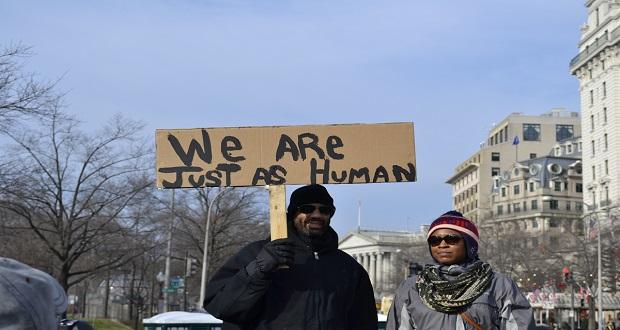
Leading courageously in organizations has typically meant inspiring others to pursue bigger goals for themselves or being bold about aspirational missions beyond the mundane objectives of profits and efficiency. Of course, leaders who are courageous about the mission of the organization are vital and necessary for healthy organizations, but in polarized times, this is not courageous enough. In organizational cultures where silence on divisive issues (politics, racial injustice, etc.) is the norm, the bar is much lower for courageous leadership. But as the lines between work and life are increasingly blurred and organizations are inviting employees to bring their whole selves to work, there is increased demand for courageous leaders who are willing to have difficult conversations, deeper empathy, and pave a new way forward toward more inclusive organizations.
Part of the lack of courageous leadership in organizations comes from the way the mantra that “we can’t talk about that at work” has defined many organization’s cultures of avoiding divisive topics within the walls of the company. Many would still argue that issues of politics, race, religion, or other divergent differences have no place at work, and are unrelated to the goals of the organization. Another reason for the lack of courageous leadership has been the overly psychological view of what defines good leaders. Most leadership assessments and processes of defining leadership talent focus exclusively on universal traits that define all leaders—their IQ, their previous experience, their personality strengths, etc. These markers of leaders may be good and useful; but they say nothing about the cultural makeup of leaders that equip them to lead diverse others.
It is not just who leaders are “in their head” that matters for leading courageously, but what leaders are made of from their cultural experiences and identities. Leaders who are reflective of their cultural identity and cultural experiences are better equipped to lead courageously during times of cultural crisis. These courageous leaders do not attempt to lead “in a vacuum” that assumes that all followers are the same, or care about the same things. Courageous leaders instead face head-on the truth about their own cultural identity, values, and biases, and the diverse cultural identities of those they lead. Being a courageous leader in polarized times does not mean that a leader becomes all things to all people. Instead, courageous leaders are bold about their stand on cultural issues; but they’re just as bold about exploring diverse perspectives, being vulnerable about their biases, finding common ground, having difficult conversations, and modeling a new way forward for more inclusive relationships around differences.
Courageous leaders provide safe and bold spaces for followers to join them on the journey towards inclusion and understanding. And they eliminate the possibility of others interpreting their silence on difficult topics as consent or not caring. There can be great solidarity and deeper understanding when leaders provide opportunities for others to face the many “elephants in the room” that may be ignored in the workplace. The first step to becoming a more courageous leader is to begin the work of understanding your own cultural identity and your particular cultural values. Because leading courageously in organizations means taking a bold stand on the cultural value of inclusion, which includes yours and the diverse perspectives and identities of those you lead. And second, courageous leaders must go the extra mile in understanding the larger cultural forces at work in the world that find their way into the organization. It is the larger cultural sea that make up the tiny ripples that we feel within our organizations, and shape our interactions with each other. Having a deeper sense of the cultural worlds that we swim in, will equip you to be more courageous in modeling new ways to navigate troubled waters.


![The Buzz: A [Race] Reality Check](https://theinclusionsolution.me/wp-content/uploads/2018/11/clarity-blog.png)















